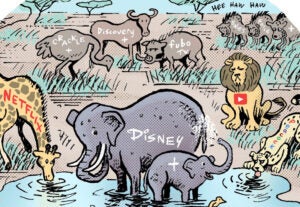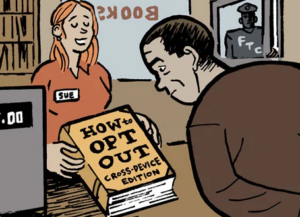 The onset of the digital media recession, if not the global economic recession, has struck Google.
The onset of the digital media recession, if not the global economic recession, has struck Google.
But Google’s doing just fine, though, thanks for asking.
The company’s revenue was $69.7 billion in Q2 2022, up from $61.9 billion at the same time last year. That’s a 13% jump off a ridiculously huge baseline. But there are more worrisome metrics.
For instance, Google’s growth rate is slowing.
That impressive 13% YoY growth rate isn’t representative of normal, incremental growth. In 2021 – Q2 especially – the year-over-year numbers shot above 60% because businesses were in crisis belt-tightening mode the year before due to the pandemic.
Okay, so that one’s easily explained. But Google’s steady quarterly slowdown is more concerning. In Q1, its revenue was up by 23%, compared to 32% in Q4 2021 – and it added only $1.6 billion in revenue quarter-over-quarter in Q2 (which is not good by Google standards).
Alphabet is also dipping into its profitability. Net income (aka, profit) dropped from $18.5 billion a year ago to $16 billion in Q2.
On the other hand, though, the company is prepared to sacrifice some profit. In Q2, Google was authorized to increase its share buybacks from $50 billion to $70 billion. Having the authorization doesn’t mean funds will be used to repurchase shares, but it is a way for Google to improve hiring and retention. (Buybacks preserve higher share prices, which are important for big public companies. Alphabet employees got a major pay cut this year, so to speak, after a 20% drop in the company’s share price.)
Google’s profit margin was flat but, to be fair, it did add 30,000 employees over the past year and traffic acquisition costs – what it pays to acquire traffic (the landmark example being the 11-digit annual fee Google pays Apple for iOS search traffic) were up by $1.3 billion.
Still, a drop in total quarterly profit is relative. Google’s profit is still so large that one investor asked why Google is even going through a major cost-cutting and investment reallocation exercise. Other companies are going through that process because they face true risks to sustainable profits.
YouTube’s slide
There are darker clouds, though.
The worst metric for Google comes in the form of YouTube.
YouTube ads earned $7.3 billion in Q2 2022, up from a cool $7 billion last year. In Q4 2021, YouTube grew by almost $1.8 billion year-over-year. In Q1, YouTube added $860 million.
Put another way, YouTube’s $300 million raw growth total solidifies a disturbing trend: It’s not impossible that by the end the year, YouTube will be down year over year.
The YouTube slowdown is a major concern for Google because it’s not a long-term investment the company can just eat, like sacrificing profitability for the sake of hiring, retention or cloud market share. If YouTube’s growth plateaus – and it looks as if the business may well reach a point in 2022 where it fails to grow compared to a year ago – that means there is a major disturbance in the force for brand and mobile performance marketing.
Alphabet CEO Sundar Pichai told investors there has been a “pullback” by some brands on their advertising spend, and CFO Ruth Porat said this was likely behind the disappointing quarter-to-quarter performance.
The company’s leaders were asked if marketer pullbacks were prominent in any particular category, market or channel (such as YouTube specifically), but no additional detail was shared.
Pichai did say that the ad budget freezes “reflect uncertainties” among businesses, many of which are impacted by multiple headwinds or external factors. (Supply-chain issues, anyone?) It was the umpteenth time during the investor call that one of the Google execs noted “uncertainty” as a major factor this quarter.
“We use the word ‘uncertainty’ because that’s what we’re seeing,” Porat said.













